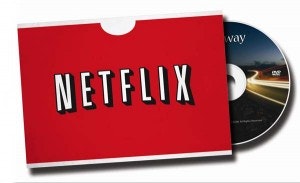
How high can Netflix shares fly? Who in their right mind would have asked this question a year ago? The answer, now, seems to be as high as the sky. Netflix shares grew by 24%, due to the service adding 2 million American subscribers to its online streaming service, plus another million international users. Knowing that users often share accounts, Netflix, Inc. (NASDAQ:NFLX) announced an optional plan that would allow up to four simultaneous streams on an account, instead of two, for $11.99 per month, $4 more than the $7.99 single-user account. Wall Street ate this good news up. Eight brokerages, including Morgan Stanley, Oppenheimer, BMO Capital, Barclays, and JPMorgan raised their price targets on Netflix stock by $75 to $250 per share. The overall economy is the real reason Netflix, Inc. (NASDAQ:NFLX) is smashing the competition.
Many have predicted the demise of the traditional television business, the so-called “cutting of the cord.” The rise of tablets has helped many viewers, “cut the cord,” literally. No longer are viewers chained to their PCs to watch content via the internet. The Netflix stock price is partly an unintended consequence of this post-PC era. Tablets have been good for Netflix investors and customers, not so much for PC makers and cable providers. Strangely, even in the midst of this weak economy, paid subscriptions for television have risen. Premium cable channels like HBO and Showtime are growing. As Netflix closes in on 30 million American subscribers, services like Hulu and Amazon continue to grow. This is yet another example of the hollowing out of the middle. Those who can pay, pay. Those who can’t go for products and services that provide the best value. Netflix is the best value in the pay TV space for many consumers. Netflix, Inc. (NASDAQ:NFLX) is adding value for many who simply cannot afford cable or Dish.
Tapped out
The decrease in new cable subscriptions and the rise of cancellations for existing accounts is due to the “downwarding” of America. We are in the fifth year of a global recession that appears to have no real end in sight. People have realized this is the way things will be for the foreseeable future and have adjusted accordingly. Part of this adjustment is only paying for real value. Most simply do not view cable and dish pay-TV as valuable enough to pay for. This new economic reality is hurting many in the pay-TV industry. The networks are still insisting on getting paid, while they continue to skimp on providing quality programming. AMC’s franchise fee disagreement with Dish networks is yet another example of the current pay-TV paradigm simply not adding up. Sadly, the AMC vs. Dish networks franchise fee disagreement was a vastly more compelling drama than anything on Lifetime, Spike, OWN, and Bravo combined.
Disney is getting over $8 per month per subscriber for just the ESPN-branded networks alone. Time Warner Inc (NYSE:TWX) has to pay to operate rating disaster CNN, and the multi-million dollar payday for Jeff Zucker, not to mention CNN’s Columbus Circle in Manhattan. I guess self-immolation does not come cheap. I guess as long as Kathy Griffin is still allowed to moon viewers on New Year’s Eve, CNN will survive. It’s little wonder cable providers keep raising their rates – someone has to pay for all this madness. Consumers want great entertainment, but many can’t and won’t be the foil in these ongoing franchise fee hostage situations, not for what passes as entertainment on pay-TV these days. Many have decided not to waste the monthly ransom that masquerades as a cable bill. People now see that those funds should go toward retirement fund or a child’s college tuition. Why burn up that money for fifty music channels that you never watch?
Add value or die
According to a recent Nielsen report, U.S. homes subscribing to cable, satellite, or telephone providers for their TV service declined 1.5%, or about 1.5 million. I guess that’s where some of those two million American Netflix, Inc. (NASDAQ:NFLX) subscribers came from. The pay-TV Industry is reaping what it has sowed. They continue to raise prices while lowering the quality of their programming. The number of commercials shown each hour has almost tripled. Most niche channels have abandoned their original namesake formats and have become unrecognizable, and interchangeable. How is Honey Boo Boo even “Learning Chanel” material? Does MTV even play music anymore? There are times you can watch the same episode of a show twenty times on four different channels. Reality programming has spread across the viewing landscaping like an angry patch of dandelions ruining a manicured suburban lawn. When a company’s business model consists of raising prices and lowering quality, customers tend to move on because life is just too short, or find another product or service.